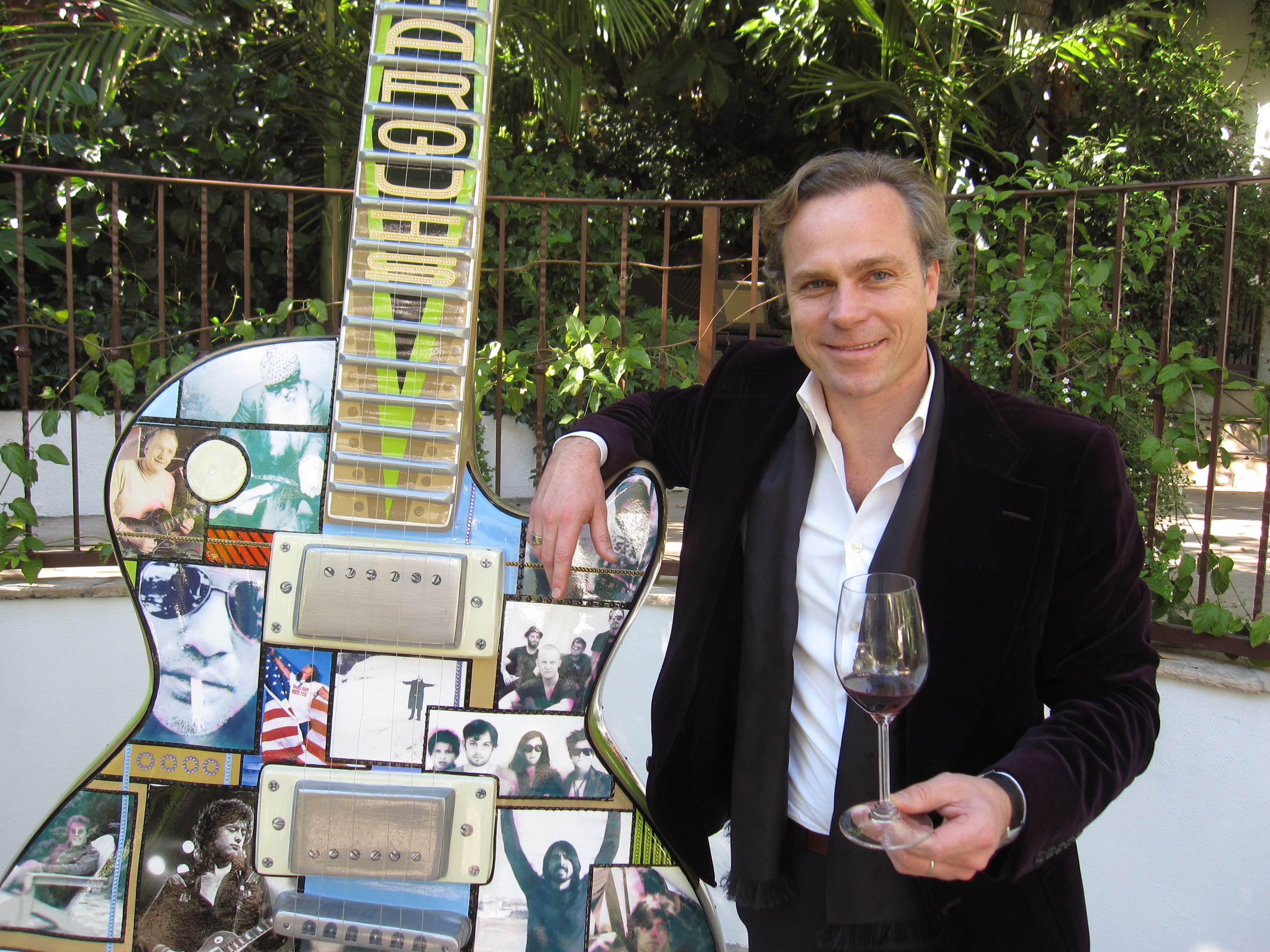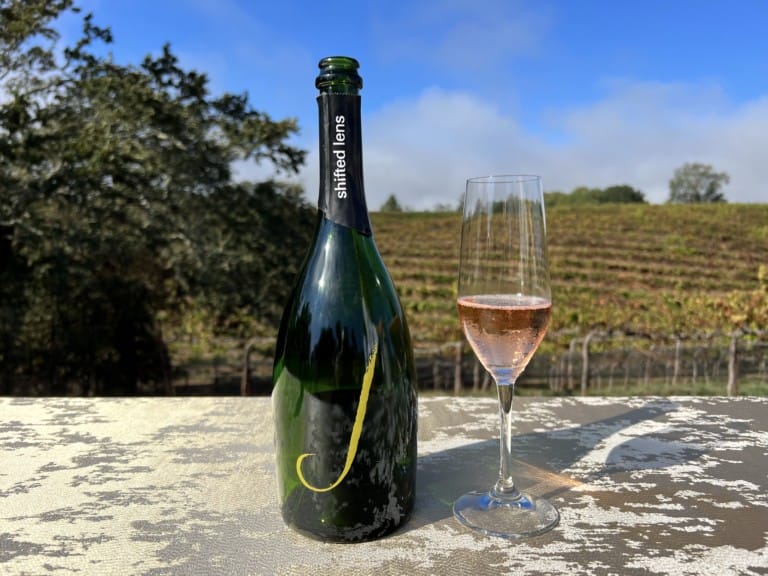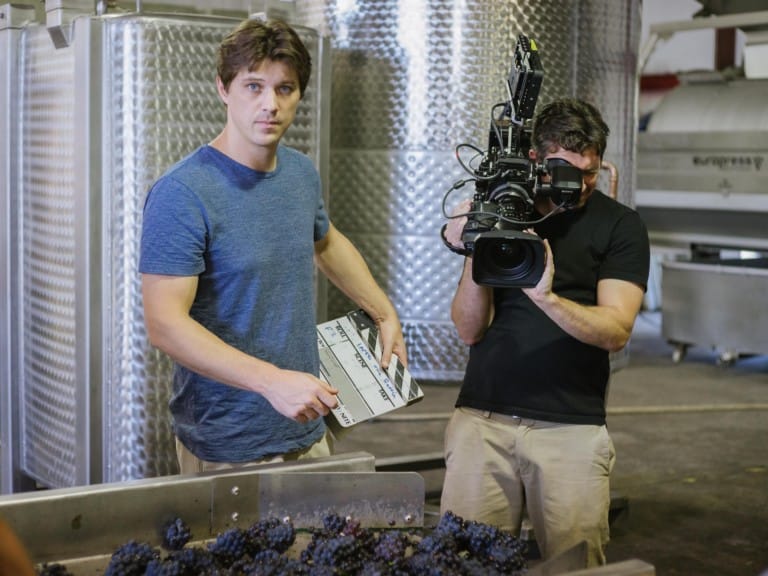Horses plow the soil instead of machines, workers spray tisanes crafted from estate-grown herbs instead of pesticides, and cow horns are buried beneath the vines to catalyze the energy of the moon, sun and stars. These labor-intensive, sometimes mystical and always biodynamic and organic methods help to distinguish Domaine de la Vougeraie from other wineries. Jean-Charles Boisset and sister Nathalie started the estate in 1999, building on the success of their parents, who started making wine in Burgundy in 1961. The siblings have since purchased DeLoach Vineyards in Sonoma County and now apply their progressive principles on two continents in order to produce the finest wines possible while being “stewards of the land.” We recently met Jean-Charles Boisset at the Sunset Marquis Hotel in West Hollywood, where he presented a number of wines from Domaine de la Vougeraie while dispensing plenty of wine knowledge. After he concluded his dynamic presentation, he joined me to delve deeper into his background and approach.
Josh Lurie: Do you have a first wine memory?
Jean-Charles Boisset: I was seven years old and was setting the table in my parents’ living room, with all their friends. You know all those very big glasses, when you’re seven, it’s quite intimidating. I tried two wines, which will leave me forever a lover of Burgundy. One was Clos du Vougeot, I believe it was a 1969, which is my date of birth, which I finished, and a Bonnes Mares, I think it was a 1964. I started to feel dizzy because I finished those glasses, so I went up to my room and I disappeared. Hence the No. 7 with JCB, which gave me the idea of creating a wine named JCB in Sonoma, as one of the best wines we make in Sonoma. I called it No. 7 because it reminded me forever that I was seven years old.
JL: What’s the first wine that you produced, and what was the year?
JCB: I’ve been involved in making wine all my life because I was born in the vineyards, but I think the first amazing experience I had was in 1999 when I made two wines. I made the Clos du Vougeot Blanc, which is mystical, which is part of the myth of Burgundy, and the La Montée Rouge (Red), which we de-stemmed by hand and every single berry we put in the vat by hand. So there were 14 of us de-stemming everything by hand, and that was another incredible memory of my life.

Was it a given that you’d make wine for a living?
For a living, I was never necessarily sure. Things happen in life and you evolve into it. What was sure in my life is I was raised on a vineyard. I was obviously immersed. My garden was a vineyard of Vougeot and Clos du Vougeot. For me it was natural. I saw a vineyard world before I saw a tomato world or lettuce or vegetable or tree. My view was of vineyards. I was born there, and obviously, below my room was the winery, so I was always around wine, barrels and vats and fermentation. So it was a given I’d always be involved and in love with wine in one way or another. To this extent, not necessarily.
JL: Was there a turning point where you knew you’d make wine for a living?
JCB: The turning point was really when I first came to the U.S. I was 11 and fell in love with Sonoma. Then when I went back to the U.S. in the ’90s, I said, “Wouldn’t it be cool to link the two cultures together and create spectacular wine in both?” I was really fortunate to have the challenge to be able to develop our wine in the U.S., to buy DeLoach and to really be involved in wine on a bigger scale. The turning point was really all those years, but really the ’90s were such an eye-opener. Travels to the region drew me even further back to where I started and where I was born, Burgundy.
JL: How are your other family members involved?
JCB: Very much so. My parents are still involved, which is great. More importantly, my sister is very involved. She’s very involved with the estate, Domaine de la Vougeraie. She lives on the estate. She was the creator of the estate with me. She’s very involved in all the strategic decisions of what we do because she’s my partner in all things. It’s very important to be in line, and we’re very much in sync. It’s only her and I, so the decision making process is quite fast, and it’s passionate. She loves fine wines. We have the same mission. We have the same envy. We have the same philosophy, so it makes it very easy for us to work together.
JL: What’s a wine trend that you’re currently excited about?
JCB: The obvious wine trend that’s been a big one for a long time is making pure wine. It’s one thing to talk about pure wine, it’s another to do it. The tasting we had today is the biggest example of what pure wine’s about, which is unfine, unfiltered, organic and biodynamically farmed and made. So we use the lunar calendar in terms of what we do in the vineyards, and every step in the vineyards and in the winery. We make wine when the moon is at the apex. We never bottle the wine when the moon is at its heyday. It’s only on the descending moon. So all the steps are being done respecting the environment and respecting the world we live in. And not only the world as Mother Earth, but also the sun, the moon and the stars, which are influencing the greater world we’re in.
Another trend which I love personally goes further into the philosophy of winemaking, into adopting alternative packages. We created a very cool thing, which is barrel to barrel. Barrel to barrel is a container in which we slide an eco bag, and in that is a 10-liter bag of great wine, which is unfine, unfiltered. It’s great because it minimizes by 99% the carbon footprint of the actual wine. Going beyond eco-friendly packaging, we are strong believers in light gas, moving into screw caps, moving eventually into P.E.T. as well, and for sure the barrel to barrel, which is this incredible invention.
JL: How did it become so important to you to be eco-friendly?
JCB: You see the effort that we’re doing with Mother Nature, and you see the effort that we’re doing in the vineyards, in the soil, how we prune our vineyards, how we cultivate and farm and our estates, how we make wine. Vineyard and winemaking is one aspect. Managing the winery better, better water, better recycling system, better energy supplies, etc., and ultimately better packaging. Minimizing the packaging impact is huge. Carbon footprint on wine less than $15 is very easy to minimize, so if we want to be protective of Mother Nature, if we want to be better citizens, if we truly want to be stewards of the land, you have to do those things as well. [pulls up a photo online] A case of wine is about 3700 grams of CO2 emission. A bag like this, an eco-bag, is 68 grams. That’s 99% less packaging.
JL: Was it important to your parents to be eco-friendly?
JCB: Well it was a decision that I made specifically with my sister and all of us as a team because we figured it’s one things to do all the things we do from wine to winery, but packaging has the biggest negative impact on to the environment. It was important for us to take it to the next level.
JL: How much value do you see in using a 100-point rating scale with wine?









Blog Comments
pharmacy tech
November 13, 2010 at 12:42 AM
Keep posting stuff like this i really like it
pharmacy tech
November 9, 2010 at 11:07 PM
My cousin recommended this blog and she was totally right keep up the fantastic work!
Tweets that mention Food GPS » Q&A with Jean-Charles Boisset (Domaine de la Vougeraie) -- Topsy.com
November 5, 2010 at 6:56 PM
[…] This post was mentioned on Twitter by Top Gps Reviews, Alltop Food. Alltop Food said: Q&A with Jean-Charles Boisset (Domaine de la Vougeraie) http://bit.ly/agV4DD […]
The Best Fine Wines » Food GPS » Q&A with Jean-Charles Boisset (Domaine de la Vougeraie)
November 5, 2010 at 4:57 PM
[…] the rest here: Food GPS » Q&A with Jean-Charles Boisset (Domaine de la Vougeraie) Related Posts:St. Jean de la Gineste – a value vielles vignes carignan | Dr … Wasserman, an […]